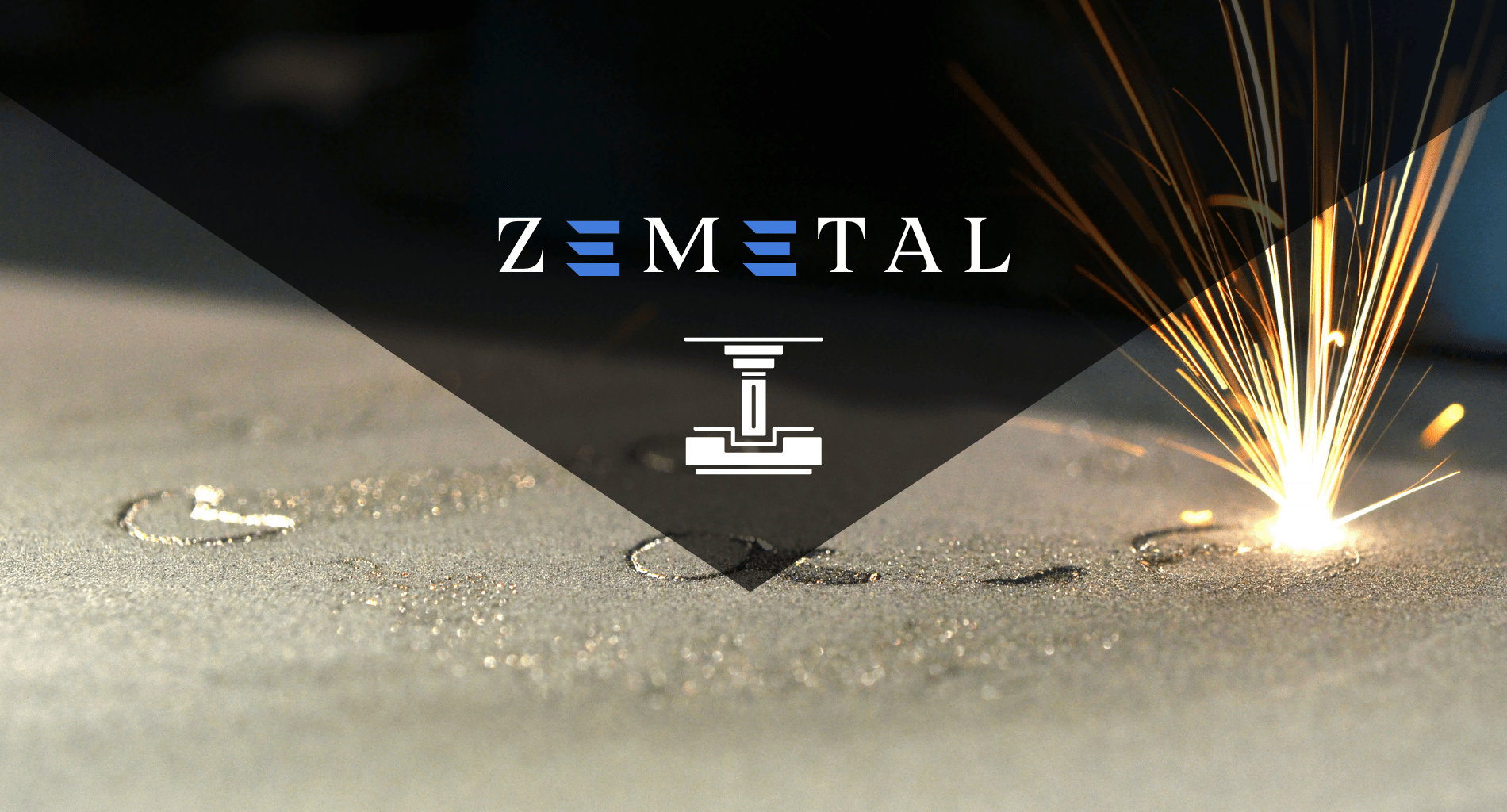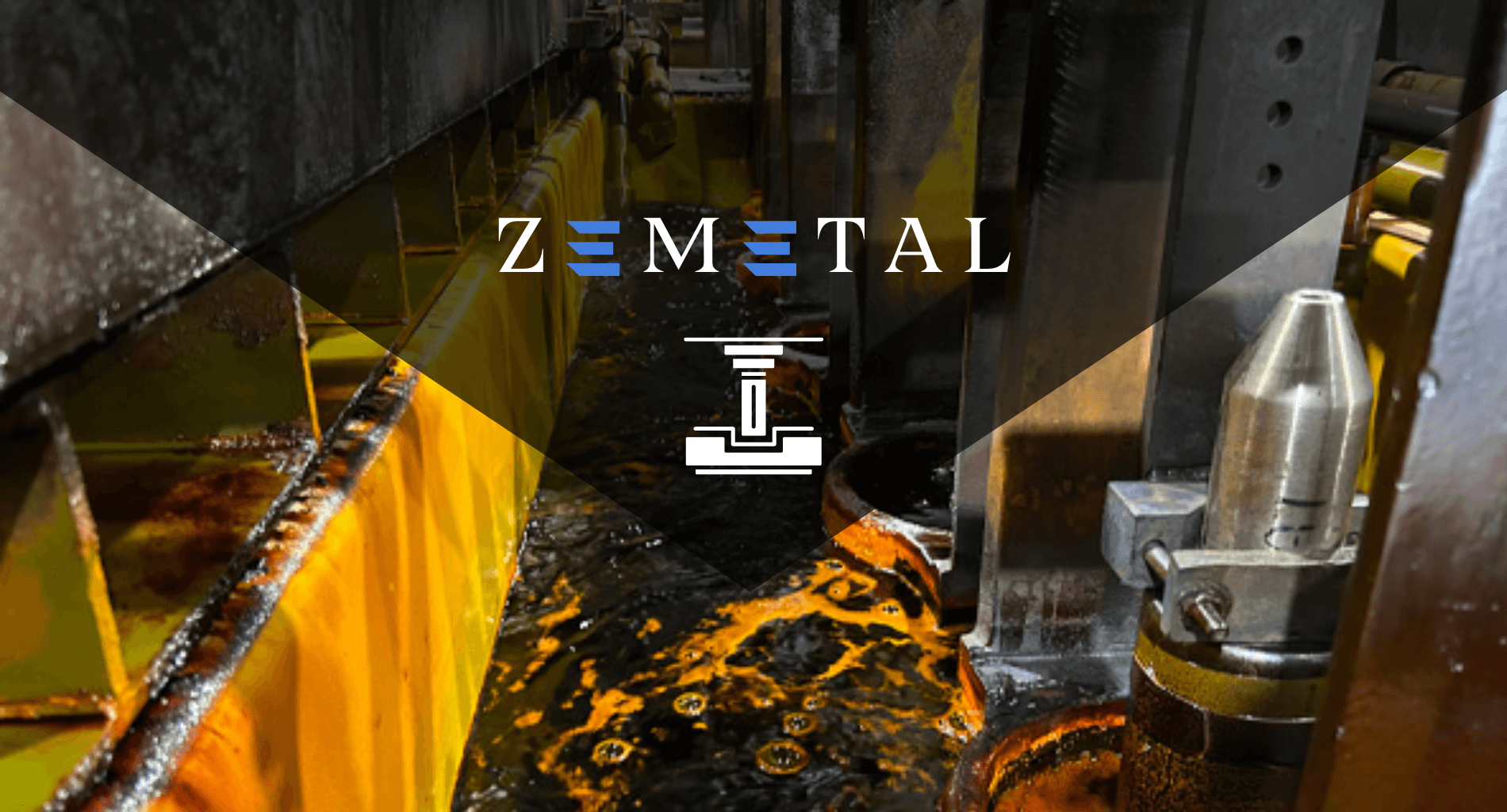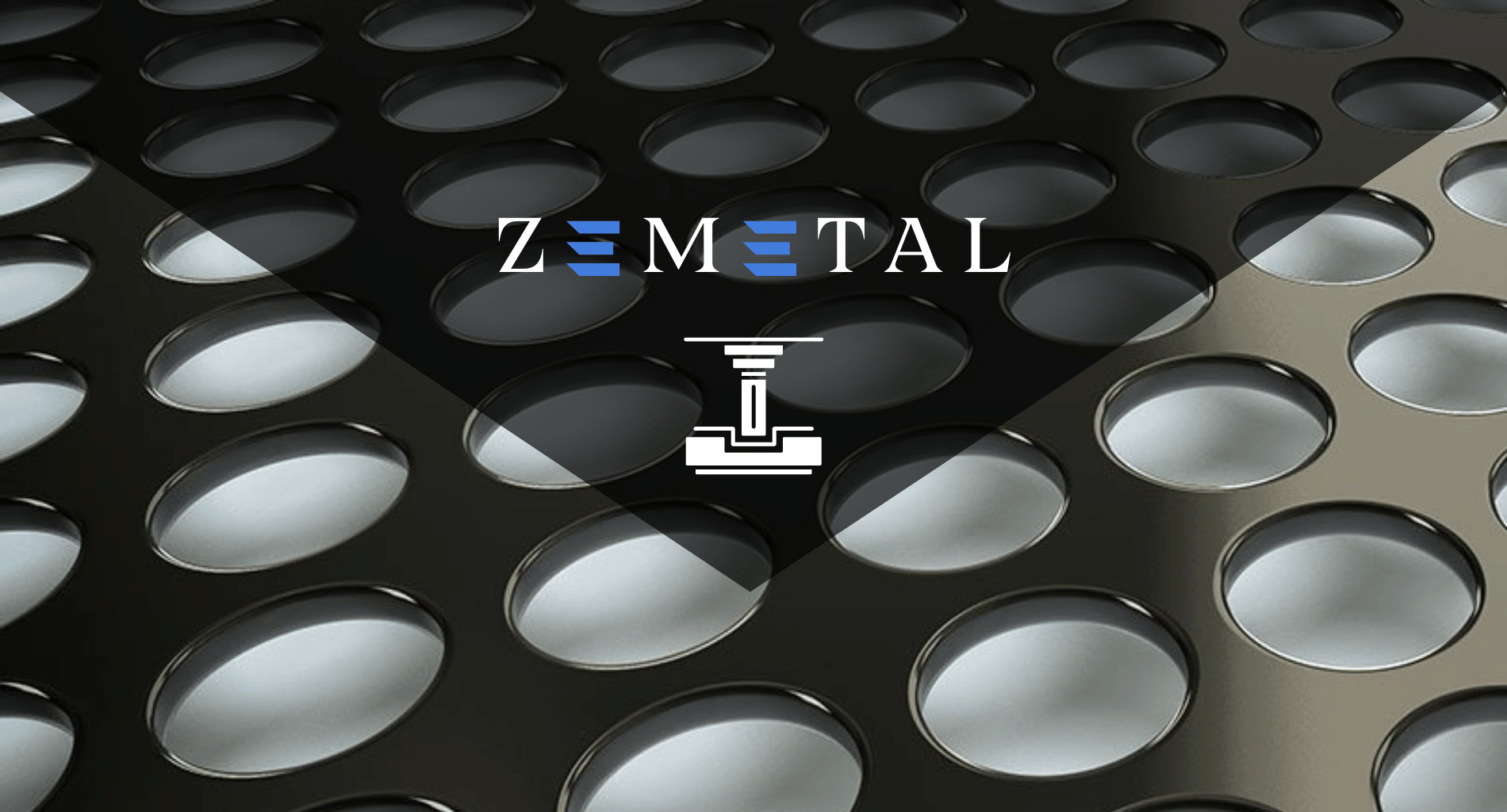Are you constantly striving for excellence in your product finishes, seeking that perfect blend of durability and shine? In a world where first impressions are everything, aiming to address this is crucial for businesses.
With a solid background in the metal fabrication industry, I bring you insights grounded in years of practice and observation. My expertise is your resource, offering you a perspective that marries technical know-how with industry foresight.
Chrome plating process is an art and science, blending aesthetics with function. It’s a testament to a business’s commitment to quality and longevity, making it a competitive edge.
In this guide, you’ll discover the 8 key steps in the chrome plating process, each critical to achieving that flawless finish. I’ll walk you through the technicalities while keeping the information accessible and actionable.
Read on to elevate your understanding and your business.
1. Step#1 Cleaning and Surface Preparation
To begin the chrome plating process, a meticulous cleaning and surface preparation is essential. Here are the fundamental steps to ensure the substrate is ready for plating:
- Degreasing: The first step involves removing all oils, greases, and other contaminants from the surface. This is typically done using a solvent bath or an alkaline cleaner, which ensures that the surface is completely clean and free from any substances that might interfere with the plating process.
- Removal of Oxide Layers: Metals often have a layer of oxide that forms on the surface. This layer must be removed to ensure proper adhesion of the chrome plating. Acid dipping, often in a hydrochloric or sulfuric acid bath, is commonly used to strip these oxides and provide a clean base metal.
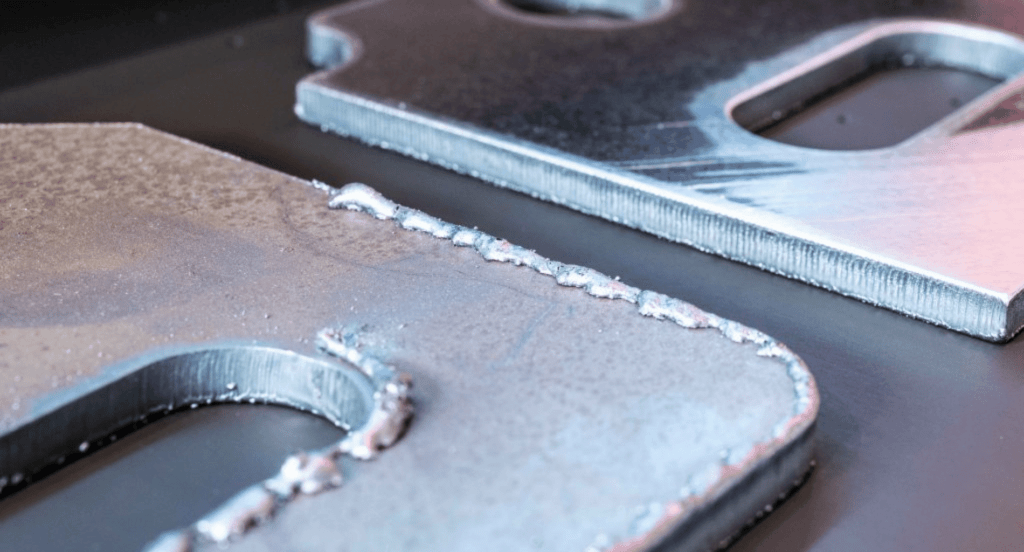
- Rinsing: After each cleaning step, it’s crucial to thoroughly rinse the item with water. This removes any residual cleaning agents or loosened debris. Multiple rinses might be necessary to ensure that the surface is completely clean and ready for the next stage.
- Surface Activation: Just before the plating process, the surface may need to be activated to ensure it’s in the best possible condition for chrome adhesion. This might involve a quick dip in a different acid solution or a light abrasive treatment. This step is vital for promoting strong adhesion and a high-quality finish.
2. Step#2 Electrolytic Bath Setup
Once the cleaning and surface preparation is complete, setting up the electrolytic bath is the next critical step. Here are the fundamental processes to ensure a successful electrolytic bath setup:

- Choose the Right Solution: The electrolytic bath typically consists of a chromic acid solution mixed with other chemicals to aid the plating process. It’s crucial to select the right concentration and mixture of chemicals based on the type of substrate and desired thickness and quality of the chrome plating.
- Temperature and pH Control: Maintaining the correct temperature and pH level in the bath is vital for a consistent and quality finish. According to Surface Technology Center, the temperature usually needs to be 130°F to 150°F. The pH level should also be closely monitored and adjusted using additives to ensure it remains within the optimal range for plating.
- Anode and Cathode Placement: In the setup, the item to be plated is connected as the cathode, and anodes made of inert material are placed in the solution. Proper placement and distance between the anode and cathode are essential for even coating distribution. The anodes help in the dissolution of chromium ions from the solution onto the substrate.
- Current and Voltage Regulation: The electrical current and voltage must be precisely controlled throughout the plating process. The current density affects the deposition rate and the quality of the chrome finish. It’s crucial to maintain a consistent current to ensure a smooth, even coat of chrome on the substrate.
3. Step#3 Applying the Base Layer
Following the electrolytic bath setup, applying a robust base layer is essential for a durable and high-quality chrome finish. Here are the fundamental steps involved in applying the base layer in the chrome plating process:
- Selection of Base Material: Typically, a layer of nickel or copper is applied before the chrome. This base layer serves several purposes: smoothens the surface, increases corrosion resistance, and enhances the overall adhesion of the chrome layer. Zemetal ensures to choose the right base material for a high quality finish and longevity of the plating.
- Cleaning Before Plating: Even after the initial cleaning, the item should be cleaned again just before the base layer is applied. This ensures that any contaminants introduced during the handling or previous processes are removed. A clean surface is critical for the base layer to adhere properly and uniformly.
- Controlled Plating Process: The application of the base layer is typically done using a similar electrolytic process as chrome plating. However, the solution and conditions might vary. The process needs to be carefully controlled, monitor the temperature, voltage, and duration to ensure the base layer is consistent in thickness.
- Inspection and Quality Assurance: After the base layer is applied, it should be thoroughly inspected for any imperfections or irregularities. Any defects in the base layer can affect the final chrome plating. Ensuring a high-quality base layer is crucial for the overall success of the chrome plating process.
4. Step#4 Electroplating with Chromium
After ensuring a flawless base layer, the central phase of electroplating with chromium begins. This is where the distinct shine and protective qualities of chrome come to life. Here are the key steps to execute this process effectively:
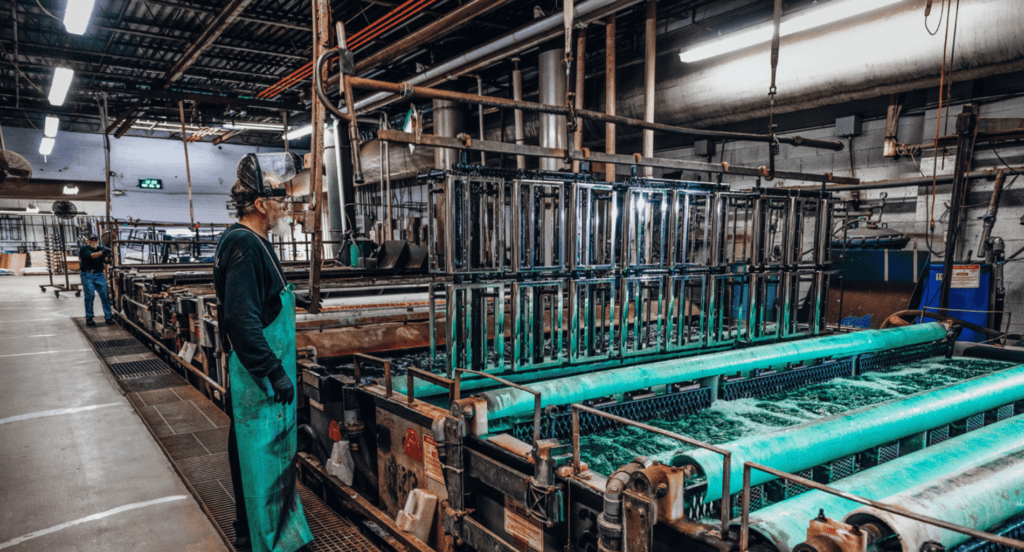
- Setting Up the Chromium Solution: The chromium plating bath is usually a solution of chromic acid and sulfuric acid. The correct ratio and concentration of this solution are critical for successful plating. The solution must be carefully prepared and maintained to ensure a consistent and high-quality chrome layer.
- Applying Electrical Current: Once the item is submerged in the chromium solution, a specific amount of electrical current is applied. The amount of current controls the rate at which chromium ions are deposited onto the base layer. This step requires precise control, as too much or too little current can lead to a poor-quality finish.
- Monitoring Plating Time: The duration that the item remains in the plating bath affects the thickness of the chrome layer. The desired thickness depends on the intended use of the item and its required durability. Time must be monitored closely to ensure that the plating is neither too thin nor too thick, which could lead to cracking.
- Regular Bath Agitation and Filtration: During the electroplating process, it’s vital to agitate the bath and filter out any contaminants regularly. This ensures that the chromium solution remains free of particles that could cause imperfections in the plating.
5. Step#5 Monitoring and Controlling Thickness
Following the electroplating with chromium, rigorous monitoring and controlling of the layer’s thickness are essential. Here are the key steps to ensure the chrome plating meets the desired specifications:
- Utilizing Thickness Measurement Tools: Tools like micrometers or X-ray fluorescence devices are commonly used to measure the thickness of the chrome layer accurately. These measurements should be taken at various stages throughout the plating process to ensure the thickness is within the desired range and uniform across the entire surface.
- Adjusting Current Density: The thickness of the chrome layer is directly related to the current density used during the electroplating process. If the measurements indicate that the thickness is not what it should be, adjustments to the current can help correct the issue.
- Controlling Plating Time: Alongside current density, the amount of time the item spends in the plating bath also determines the thickness of the chrome layer. Monitoring time closely and making adjustments as necessary can help achieve the desired thickness. For instance, too little time results in insufficient coverage, while too much could lead to an overly thick layer.
- Regular Solution Maintenance: The condition of the chromium solution can affect the deposition rate and thickness of the plating. Regularly monitoring and maintaining the solution’s temperature and cleanliness helps ensure consistent thickness. Any changes in the solution’s composition should be corrected promptly to maintain the desired plating rate.
6. Step#6 Rinsing and Drying
With the critical task of monitoring and controlling thickness complete, the focus shifts to thoroughly rinsing and drying the plated item, to maintain the integrity of the chrome finish. Here are the steps on how to do it:
- Immediate Rinsing After Plating: As soon as the electroplating process is complete, the item must be moved quickly to a rinsing station. Here, it’s rinsed thoroughly with water to remove any residual chromium solution. This step is crucial to prevent any chemical reactions that might occur if the plating solution dries on the surface.
- Multiple Rinsing Stages: Often, a single rinse is not enough to remove all traces of the plating solution. The item may need to go through multiple rinsing stages, with water quality and temperature controlled to ensure thorough cleaning. Each stage helps in progressively removing all residues, ensuring a clean surface.
- Use Deionized Water: The final rinse is typically done with deionized or distilled water. This water is free from any minerals that could leave deposits on the newly plated surface. The final rinse is critical for achieving a spot-free and clean finish, which is essential for the aesthetic and functional quality of the item.
- Controlled Drying Process: After the final rinse, the item must be dried thoroughly. The drying process may vary, from air drying in a clean environment to using a drying oven that speeds up the process and ensures a completely dry surface. The chosen method needs to effectively remove all moisture without introducing new contaminants.
7. Step#7 Quality Inspection
Following the meticulous rinsing and drying, the chrome-plated item undergoes a crucial phase of quality inspection, to ensure that the standard quality of chrome plating. Here’s how a thorough quality inspection is conducted:
- Visual Inspection for Defects: The first step is often a detailed visual inspection. Zemetal promises that they look for any obvious defects such as uneven coating or pits for the finest product. This is done under good lighting conditions, and sometimes magnification tools are used to inspect the quality of the finish closely.
This table summarizes the key aspects of Zemetal’s visual inspection process for detecting defects, highlighting the importance of this step in ensuring the finest product quality.
| Inspection Aspect | Description | Importance in Quality Assurance |
| Detection of Uneven Coating | Identifying irregularities in coating layers | Ensures uniformity and surface quality |
| Identification of Pits | Looking for small depressions or cavities | Critical for structural integrity |
| Good Lighting Conditions | Enhances visibility for inspectors | Facilitates thorough inspection |
| Use of Magnification Tools | Allows detailed examination of finish | Increases accuracy in defect detection |
| Surface Smoothness Check | Assessing the evenness of the surface finish | Essential for aesthetic and functional quality |
- Thickness Measurement: Using tools like micrometers or X-ray fluorescence, the thickness of the chrome layer is measured. This is to ensure it meets the specific requirements of the project. Consistent thickness across the entire surface is vital for both the item’s performance and its aesthetic appeal.
- Adhesion Testing: Netx is testing the adhesion of the chrome layer to the substrate. Adhesive methods like the tape test are commonly used. This test is crucial because poor adhesion can lead to peeling or flaking of the chrome layer, compromising the item’s durability and appearance.
- Functional Testing: Depending on the item’s intended use, it may undergo functional testing. For example, stress tests or corrosion resistance tests relevant to its application. These tests ensure that the chrome plating not only looks good but also performs well under the conditions it’s intended for.
8. Step#8 Finishing Touches
Once the quality inspection confirms the chrome plating meets all standards, the process concludes with the essential finishing touches. Here’s a breakdown of how finishing touches are expertly applied in the chrome plating process:
- Polishing for Enhanced Shine: The first finishing touch often involves polishing the chrome-plated item. Polishing enhances the item’s shine and smoothens any minor imperfections that might have been overlooked during the inspection. This step is crucial for achieving the mirror-like finish that is characteristic of high-quality chrome plating.
- Cleaning and Wiping: After polishing, the item is cleaned and wiped down to remove any polishing compounds or residues. This is typically done with a soft, lint-free cloth to ensure that the surface is spotless. A clean final product ensures that it’s ready for packaging without the need for further cleaning.
- Protective Packaging: Once the item is polished and cleaned, it’s important to package it in a way that protects the newly applied chrome finish. This might involve wrapping it in a soft material or placing it in a container that prevents movement and potential scratching.
- Final Inspection and Documentation: Final inspection is often conducted to ensure that the item is indeed ready for delivery. This might include a checklist of appearance and quality criteria. Additionally, documentation detailing the plating process and any inspections conducted is often provided to the customer, offering assurance of the item’s quality.
Conclusion
Understanding the complexities of the chrome plating process is vital for businesses aiming to produce superior quality products. This guide has illuminated the key steps involved, ensuring you’re equipped with the knowledge to make informed decisions.
If you’re seeking expert chrome plating services or further insights, Zemetal is your go-to resource. Explore more solutions tailored to your needs and for any inquiries, please feel free to contact us.
Dive Deeper Into Our Resources
Looking for more diverse service options? Browse through our handpicked selections:
For some insightful reads, we’ve curated a list of recommended articles just for you:
Still haven’t found what you’re looking for? Don’t hesitate to contact us. We’re available around the clock to assist you.


